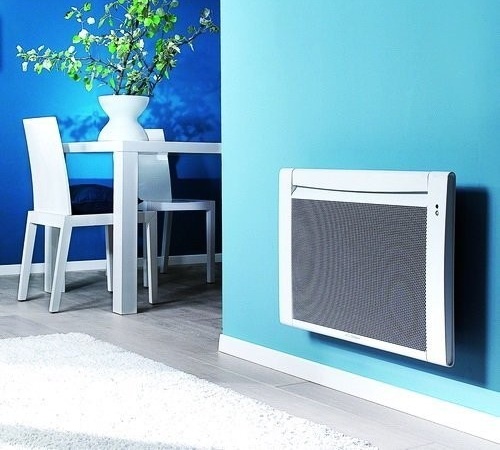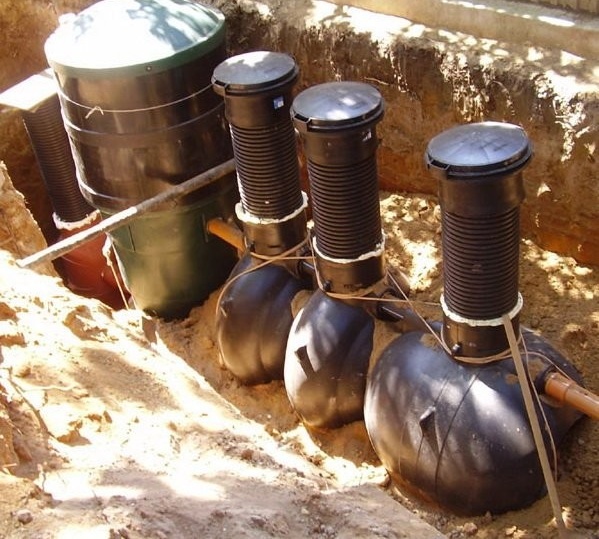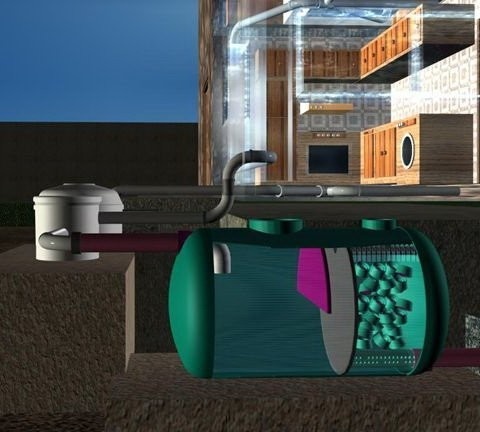Bacteria for septic tanks: principles of bacteriological treatment and analysis of market supply
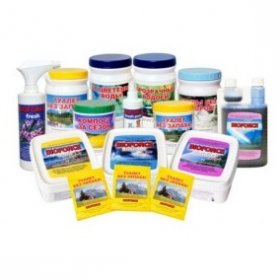
Antediluvian cesspools are replaced by septic tanks everywhere. In these tanks, effluents decompose under the influence of natural processes, and treated water enters the soil or is used for technical needs. When creating treatment facilities of this type, it is very important to choose the right bacteria for septic tanks. We suggest that you understand the principle of operation of this cleaning method, as well as analyze the market supply and see which bacteria are best from which manufacturer.
The general principle of bacteria for cleaning can be understood by watching the video instruction for the use of one well-known drug - "Vodograi"
The principle of bacteriological treatment
To begin with, it does not hurt to understand the concepts. There are aerobic and anaerobic bacteria for the septic tank. The first for normal existence requires air, which must be pumped into wastewater using a specially installed compressor. In addition, you will need textile shields covered with a fabric with a fine pile, on which a colony of bacteria is fixed.
With anaerobic bacteria, everything is somewhat simpler, since they do not need oxygen for life. The drug is simply added to the appropriate compartment of the septic tank, where microorganisms develop both in the middle of the tank and at the bottom.
Typically, a separate container is allocated for each type of living bacteria. First, anaerobic microorganisms begin to work, which largely deal with solid waste. Partially treated effluents enter the next compartment, where, under the influence of aerobic bacteria, the wastewater is treated and clarified. The degree of purification allows the use of liquid for technical needs, for example, for irrigation.
Advice! If the site does not need additional water supply and irrigation, the stage of post-treatment of effluents with aerobic bacteria can be abandoned. In this case, the succulent water slowly enters the soil, where it undergoes natural purification by aerobic organisms that live in the soil.

The principle of operation of the septic tank with bacteria is based on natural processes and is not accompanied by the release of any substances hazardous to health
A properly equipped septic tank helps to solve problems such as:
- Cleaning of drains;
- elimination of unpleasant odors;
- reducing the risk of soil contamination to a minimum level;
- removal of fatty deposits that settle on the walls of the tank;
- control of blockages in the sewer system;
- liquefaction of sediment accumulated at the bottom of the septic tank, etc.
At first glance, it seems that little is needed from the owner of the septic tank: to properly equip the container, introduce the necessary amount of anaerobic and aerobic bacteria for the septic tank and forget about the problem of waste disposal forever. Alas, everything is not so simple.
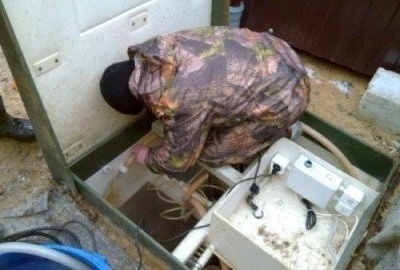
Even the best septic tank needs periodic maintenance and repair.Suitable bacteria must be added regularly to the container, and sometimes the building should be cleaned.
First of all, occasionally, a septic tank will still have to be cleaned, since not all waste is “tough” to useful microorganisms. In addition, periodically it is necessary to replenish the supply of bacteria in the septic tank so that its work remains effective. Finally, you need to choose the right bacteria for your septic tank.
Note. Both aerobic and anaerobic microorganisms can be adversely affected by household chemicals, especially chlorine-containing substances. Therefore, when choosing cleaning products for the home (especially with a high concentration of active substances), the recommendations of the bacterial manufacturer for the septic tank should be taken into account. Probably, aggressive household chemicals will have to be completely abandoned.
Market offer overview
On the market are preparations for septic tanks both domestic and foreign production. It should be noted that abroad, more serious experience has been gained in the production of such microorganisms; therefore, imported products have higher efficiency and better quality. However, domestic drugs can also be quite effective, while they differ from their foreign counterparts at a very attractive price.
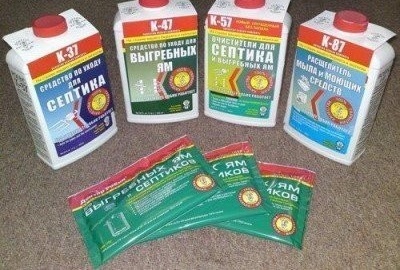
Bacteria Dr. Robik are very popular in the biological product market. Certain types of the drug can even cope with the neutralization of aggressive chemicals.
Note! The high price and inscriptions in a foreign language do not guarantee the quality of the product, since the market for septic drugs is not as protected from fakes as any other. Bacteria should be purchased from trusted suppliers, not hesitating to be interested in having a quality certificate.
One of the most popular drugs is the Canadian bacteria for the Dr. Robik septic line. Their assortment is quite wide, which allows you to choose the optimal combination of microorganisms for a particular septic tank. Each set of drugs is assigned a specific number. For example, one bottle of Dr. Robik 37 is enough to clean a septic tank or VOC with a capacity of about 2000 liters. But Dr. Robik 106a is a specialized complex of six drugs that successfully cope with the processing of fats, fabrics, paper, detergents, etc.
Packages of BIOFORCE Septic Comfort bio-cleaner (USA) for a standard septic tank will last for a whole year. These are water-soluble sachets that are recommended for use at any stage of operation of the septic tank. The drug is sensitive to alkaline and acidic environments, at low temperatures, bacteria go into a dormant state, but do not die.
Septicsol bio granules are produced in the USA and Canada. For every two cubic meters of a septic tank, you need one sachet of the product, which is simply poured into the toilet, and then washed off a couple of times. The drug is added to the septic tank every two weeks, after two months you can add biogranules only once a month.
Means for toilets and septic tanks "Tamir" designed and manufactured. For every two cubic meters of septic tank volume, 350 ml of liquid should be poured. Tamir bio-cleaner is added as an unpleasant odor appears. Gradually, the period of periodic maintenance increases, as the number of bacteria in the septic tank is gradually growing.
